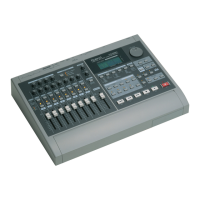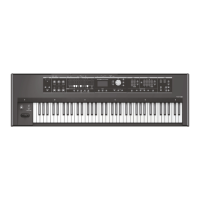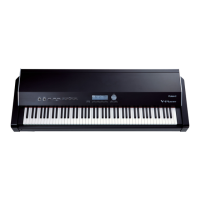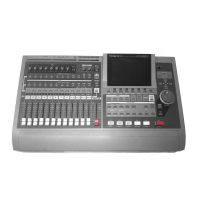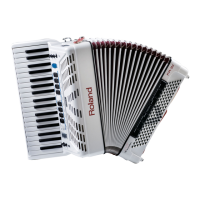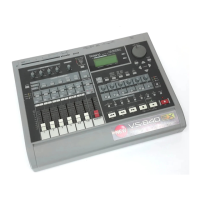19
Chapter 2: Understanding Your VS-880
SIGNAL PATH – The signal path is the wire (conduit, pipe, conductor, etc.) that carries your audio
signal (the music) from an OUTPUT to the next INPUT. For example, the wire between your
Hi Fi amplifier and your speaker is a SIGNAL PATH. This wire carries the music from the
amplifier to the speaker. Your guitar cord is a signal path. It carries the OUTPUT of the
guitar to the INPUT of your guitar amp or VS-880.
BUSS – A BUSS is a special type of signal path to which a number of inputs may be connected for
feed to one or more outputs. In a mixing console a BUSS is usually a long piece of wire to
which any input channel may be connected by means of a switch or push button. The end of
the wire (buss) goes into a combining amplifier or summing amplifier to combine all the
INPUTS together. The combining amplifier then feeds one of the console outputs.
LEVEL – The last item to consider about signal flow is the level or volume of the signal.
Audio signals can be very low level (the output of a dynamic microphone if you whisper into it) or
extremely high level (the output of your 400 watt power amplifier).
There are two basic audio levels of interest when using your VS-880 – Microphone Level and Line Level.
The term of measurement for level is the decibel (dB). This is not the place for a complete description of the
decibel, however, a few numbers are handy to remember.
Dynamic Microphone Level -50 dBm
Condenser Microphone Level -30 dBm
HI FI Line Level -10 dBV
Professional Line Level + 4 dBm
0 dBm = 0.775 Vrms, 0 dBV = 1 Vrms
These are nominal levels for reference only. In actual usage, microphones and other
audio equipment exhibit a very wide dynamic (level) range. The important thing to
remember is that all audio equipment operates at some internal “nominal” level. If,
for example, you feed a very high level signal into an input designed for a low level
signal, the input will distort (you “overdrive” the input). Conversely, if you feed an
extremely low level signal into an input designed for a high level signal, you will
add noise to the audio signal.
The VS-880 uses “variable” level inputs. This allows you to send a wide range of signal levels into the VS-
880 without distortion or noise. The INPUT SENS (input sensitivity) knobs in the upper left corner of the
front panel control the variable inputs.
When they are set to -50, it means that they are set to receive a nominal level of -50 dBm (dynamic
microphone). Conversely, when they are set to +4, they should receive an input level of approx. + 4 dBm.
The “nominal” operating level of the VS-880 is -10 dBV.
A Mixer Analogy
To best understand the concepts of signal flow, let’s think about the plumbing in your own home and use it
to illustrate the signal flow in the VS-880 mixer.

